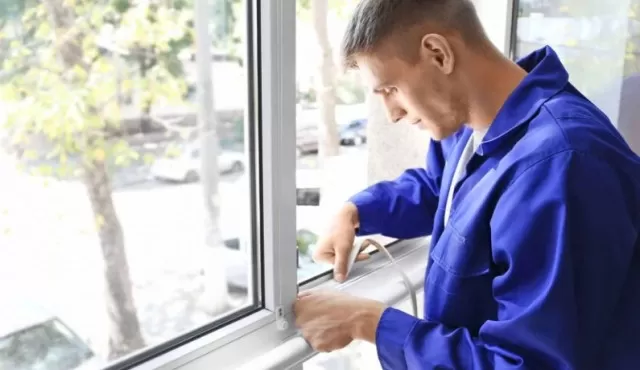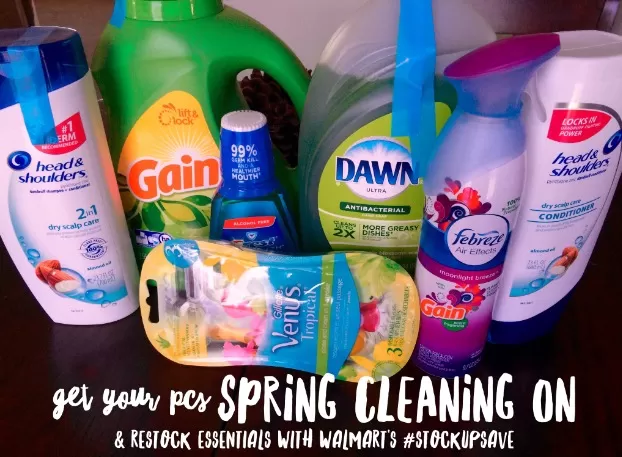Essential Monthly Home Maintenance Projects for Homeowners. Maintaining a Home in Top Shape: Essential Monthly Tasks. A well-cared-for home is a source of comfort and pride.
To ensure your living space remains in top shape and stands the test of timeBy dedicating time each month to these essential tasks, you can keep your home in top shape, ensuring it remains a safe, comfortable, and beautiful sanctuary for you and your loved ones to enjoy.
Prioritize Preventative Home Maintenance: Monthly Chores to Safeguard Your Property

Home maintenance can be a daunting task, particularly for those new to homeownership.
Instead of letting major issues catch you off guard, adopting a proactive approach with a monthly schedule of simple tasks can be a wise decision. Taking just a few minutes to complete these chores regularly can significantly contribute to preventing more significant problems from emerging in the future.
Below, we’ve compiled a comprehensive list of essential chores to focus on, ensuring your home remains in good condition and safeguarding its value.
Inspect and Clean Gutters: Regularly checking and cleaning your gutters prevents clogging and potential water damage to your home’s foundation and exterior.
Check for Leaks: Keep an eye out for any signs of leaks, such as water stains or musty smells, to address plumbing issues promptly.
Test Smoke and Carbon Monoxide Detectors: Ensure the safety of your family by testing these devices monthly and replacing batteries as needed.
Inspect HVAC Systems: Regularly inspect and change air filters to maintain efficient operation and improve indoor Air Quality.
Seal Windows and Doors: Prevent drafts and energy loss by inspecting and sealing any gaps around windows and doors.
Inspect Roof and Attic: Check for damaged shingles, leaks, or signs of pests to protect your home from potential water damage and unwanted critters.
Maintain Landscaping: Trim trees and shrubs away from the house, clean debris from gutters, and inspect the exterior for any needed repairs.
Check for Pest Infestations: Look for signs of pests both inside and outside your home, and take necessary measures to prevent infestations.
Clean Dryer Vents: Regularly remove lint buildup from dryer vents to prevent fire hazards and improve appliance efficiency.
Inspect Plumbing for Leaks: Check for leaks in faucets, pipes, and under sinks, and fix them promptly to avoid water damage.
Test Garage Door Safety Features: Ensure the garage door’s auto-reverse feature is working correctly to prevent accidents.
Inspect Electrical Outlets and Cords: Check for loose outlets or frayed cords and address any electrical issues to avoid potential fire hazards.
Maintain Your Water Heater: Regularly flush your water heater to prevent sediment buildup, which can lead to reduced efficiency and potentially shorten its lifespan.
Clean Refrigerator Coils: Dust and clean the refrigerator coils to maintain the appliance’s efficiency and prolong its life.
Inspect and Clean Chimney: For homes with chimneys, regular inspection and cleaning prevent chimney fires and ensure proper ventilation.
By diligently following this monthly preventative maintenance schedule, you’ll not only save time and money on future repairs but also ensure the safety and longevity of your home.
Remember, a little effort today can go a long way in protecting your investment and providing peace of mind for years to come.
Conduct Regular Smoke Detector and Fire Safety Checks to Protect Your Home
Safeguarding your home and loved ones from potential fire hazards is paramount, and regularly testing your smoke alarms and carbon monoxide detectors is a crucial step in ensuring their proper functioning.
Take the time to inspect these devices and replace batteries as needed to maintain their effectiveness. Additionally, pay attention to fire extinguishers, ensuring they are in good working condition and not expired. In the event of an emergency, it’s vital to have everyone in the household aware of their locations for quick response. Here’s a detailed guide on how to conduct your fire safety check:.
Check Smoke Alarms: Test each smoke alarm in your home to ensure they emit a loud and audible sound.
Press the “Test” button on each device and verify that the alarm activates promptly. If you hear a weak sound or no sound at all, replace the batteries immediately.
Inspect Carbon Monoxide Detectors: Like smoke alarms, carbon monoxide detectors need to be tested regularly.
Press the “Test” button and ensure the alarm functions correctly. Carbon monoxide is odorless and colorless, making these detectors crucial for detecting this deadly gas.
Replace Batteries: If any of the alarms or detectors show a low battery signal or fail to function during the test, replace the batteries with new ones immediately.
Don’t postpone this simple yet vital task.
Check Fire Extinguishers: Inspect each fire extinguisher to confirm that the pressure gauge indicates it is charged and ready for use.
Check for any signs of damage or corrosion on the extinguisher body or nozzle. If the extinguisher is damaged or has passed its expiration date, replace it promptly.
Know Extinguisher Types and Usage: Educate yourself and your household members on the various types of fire extinguishers in your home and their specific uses.
Make sure everyone understands how to operate them correctly in case of a fire emergency.
Plan Fire Escape Routes: Develop a fire escape plan for your home, ensuring that every family member knows the best exits to use in case of a fire.
Practice the escape plan regularly to ensure everyone is familiar with it.
Emergency Contact Information: Keep a list of emergency contact numbers, including the local fire department and other relevant authorities, near your phone or in a visible area.
Teach Fire Safety to Children: Educate children about fire safety and the importance of never playing with matches, lighters, or electrical appliances.
Schedule Regular Checks: Establish a schedule to conduct these fire safety checks at least twice a year.
Mark the dates on your calendar to ensure you don’t forget.
Seek Professional Inspection: Consider having a professional inspect your smoke alarms, carbon monoxide detectors, and fire extinguishers annually to guarantee their optimal functionality.
By prioritizing these fire safety measures and conducting regular tests, you significantly enhance the protection of your home and loved ones.
Remember, being prepared and proactive is the key to preventing fire-related incidents and minimizing potential damage.
Maintain Optimal Indoor Comfort: Regularly Inspect and Replace HVAC Filters

The heating, ventilation, and air conditioning (HVAC) system plays a vital role in keeping your home comfortable throughout the year.
One crucial component of the HVAC system is the air filter, which requires regular inspection and potential replacement. By taking proper care of your filters, you can significantly enhance indoor air quality and ensure the heating system operates efficiently, particularly during colder months.
Enhance Efficiency and Longevity: Simple Tips for Maintaining Kitchen Appliances
Your kitchen appliances play a central role in daily life, making it essential to keep them in top-notch condition.
Regular maintenance not only ensures optimal performance but also prolongs their lifespan. Here are some practical tips for maintaining your dishwasher, fridge, and oven:.
Dishwasher:.
Clean or Replace Filters: Inspect the dishwasher’s filters regularly, usually located at the bottom of the appliance.
Remove any debris or food particles accumulated in the filters. If your dishwasher has a removable filter, clean it thoroughly.
For dishwashers with self-cleaning filters, run a cycle without dishes to clear out residue.
Fridge:.
Clean the Condenser Coils: The condenser coils, usually located at the back or bottom of the fridge, are responsible for dissipating heat.
Over time, they can accumulate dust and debris, hindering their efficiency. Vacuum or dust them at least twice a year to ensure optimal cooling performance.
Inspect Water Filters: If your fridge has a water dispenser or ice cube maker, check and change the water filter as recommended by the manufacturer.
Regular replacements ensure you have clean and fresh-tasting water and ice.
Monthly Food Check: Every month, go through the contents of your fridge and pantry.
Dispose of any expired items, leftovers that have been in the fridge for too long, or questionable food. This helps maintain a clean and organized refrigerator while avoiding potential health risks.
Oven:.
Regular Cleaning: Clean spills and splatters in the oven after each use to prevent them from becoming stubborn stains later on.
Use appropriate oven cleaners or natural cleaning solutions to keep it in top condition.
Check Seals and Gaskets: Inspect the oven door seals and gaskets for any signs of wear or damage.
Proper seals ensure better heat retention and cooking efficiency.
Calibrate Temperature: If you notice discrepancies between the oven’s temperature setting and the actual cooking temperature, consider calibrating it.
Consult the user manual for instructions on how to do this.
By incorporating these simple maintenance practices into your monthly cleaning routine, you can ensure your kitchen appliances function at their best, prolong their lifespan, and save on potential repair or replacement costs.
Remember, a little effort in maintenance goes a long way in preserving the efficiency and reliability of your kitchen appliances.
Stay Prepared and Well-Stocked: Monthly Restocking of Household Essentials

Running out of essential items at the wrong time can be frustrating or even potentially hazardous during emergencies.
To avoid such inconveniences and ensure your household is always well-prepared, maintaining a regular restocking routine for vital supplies is crucial. Follow these steps to keep your inventory of household essentials up to date:.
Create a Comprehensive List: Begin by compiling a detailed list of household essentials.
This list should include items such as:.
Toilet paper.
Bandages and first-aid supplies.
Toothpaste and other personal toiletries.
cleaning products and disinfectants.
Paper towels.
Batteries for flashlights and other devices.
Set a Monthly Reminder: Designate a specific day each month for restocking your supplies.
Choose a date that is easy to remember and aligns with your schedule. Utilize digital calendar reminders, task management apps, or physical reminders like sticky notes to ensure you don’t miss the restocking day.
Check Inventory Regularly: On your designated restocking day each month, perform a thorough check of your inventory.
Go through each item on your list and assess the quantity available. Make note of items that are running low or nearing expiration dates.
Restock and Replenish: Based on your inventory check, create a shopping list of items that need restocking.
Head to the store or place online orders to replenish the items you’re running low on. Prioritize purchasing items that are essential for health, safety, and well-being.
Organize and Store: After purchasing new supplies, organize them neatly in designated storage areas. Keep first-aid supplies together, store cleaning products in a secure cabinet, and ensure batteries are stored properly to prevent leakage.
Emergency Preparedness: In addition to regular monthly restocking, consider setting aside a separate emergency kit with essential items that can sustain your household during weather events or other emergencies. Include items such as non-perishable food, bottled water, flashlight, radio, and other necessities.
Avoid Overstocking: While it’s essential to have a well-stocked inventory, try to strike a balance and avoid excessive hoarding. Keep track of expiration dates and use items before they go bad.
By adhering to a monthly restocking routine, you’ll ensure your household is always equipped with the necessary essentials.
This proactive approach not only prevents last-minute inconveniences but also provides peace of mind, knowing that you’re well-prepared for any situation that may arise.
*The information is for reference only.